-
 Bitcoin
Bitcoin $110000
-1.38% -
 Ethereum
Ethereum $4353
-1.95% -
 XRP
XRP $2.834
-1.20% -
 Tether USDt
Tether USDt $1.000
0.02% -
 BNB
BNB $847.1
-1.38% -
 Solana
Solana $206.1
-2.42% -
 USDC
USDC $0.9999
0.02% -
 Dogecoin
Dogecoin $0.2144
-1.54% -
 TRON
TRON $0.3378
-0.74% -
 Cardano
Cardano $0.8127
-2.69% -
 Chainlink
Chainlink $23.06
-2.34% -
 Hyperliquid
Hyperliquid $45.24
-0.77% -
 Ethena USDe
Ethena USDe $1.001
0.03% -
 Sui
Sui $3.285
-2.46% -
 Bitcoin Cash
Bitcoin Cash $588.1
-1.85% -
 Stellar
Stellar $0.3577
-1.93% -
 Avalanche
Avalanche $24.66
-2.52% -
 Hedera
Hedera $0.2129
-3.80% -
 Cronos
Cronos $0.2658
-2.11% -
 UNUS SED LEO
UNUS SED LEO $9.522
0.19% -
 Litecoin
Litecoin $110.6
-1.80% -
 Toncoin
Toncoin $3.122
-1.79% -
 Shiba Inu
Shiba Inu $0.00001212
-2.78% -
 Polkadot
Polkadot $3.770
-2.40% -
 Uniswap
Uniswap $9.346
-2.95% -
 Dai
Dai $0.9999
-0.02% -
 Monero
Monero $269.5
0.04% -
 Aave
Aave $319.6
-1.91% -
 Ethena
Ethena $0.6907
-5.62% -
 Bitget Token
Bitget Token $4.891
-3.49%
What is over-collateralization in DeFi?
Over-collateralization in DeFi ensures loans are backed by more value than borrowed, protecting lenders against volatility and enabling trustless, global access to credit.
Sep 04, 2025 at 08:54 am
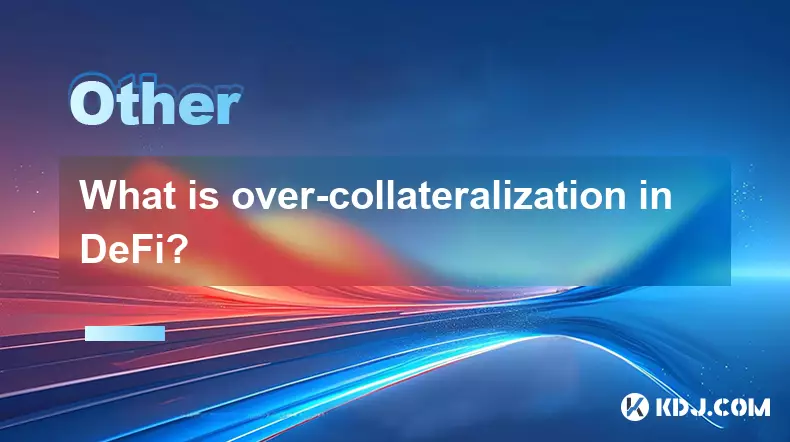
Understanding Over-Collateralization in DeFi
1. Over-collateralization is a foundational mechanism in decentralized finance (DeFi) that ensures borrowers provide more value in collateral than the amount they wish to borrow. This excess collateral acts as a safety net for lenders in case of default. Since DeFi platforms operate without centralized intermediaries, they rely on smart contracts to enforce repayment, making over-collateralization essential to mitigate risk.
2. When a user wants to borrow assets from a lending protocol like Aave or MakerDAO, they must deposit digital assets such as ETH or stablecoins as collateral. The value of this collateral must exceed the loan amount, often by a significant margin. For example, a protocol might require 150% collateralization, meaning $150 worth of assets must be locked to borrow $100.
3. This buffer protects the system during market volatility. Cryptocurrencies are known for their price swings, and if the value of the collateral drops too close to the borrowed amount, the position becomes risky. To prevent losses, DeFi platforms use automated liquidation processes that sell part of the collateral if its value falls below a certain threshold.
4. Over-collateralization also enables trustless borrowing. Because there is no credit check or identity verification, protocols must ensure that every loan is secured by tangible assets on the blockchain. This model allows global access to financial services without reliance on traditional banking infrastructure.
5. While effective, this model limits capital efficiency. Users cannot borrow up to the full value of their holdings, which means a large portion of their assets remains locked. This has led to ongoing innovation in DeFi to explore under-collateralized and uncollateralized lending models, though these remain experimental and carry higher risk.
Why Protocols Enforce High Collateral Ratios
1. Market volatility is a primary reason for high collateral requirements. Cryptocurrencies can experience rapid price drops within minutes. A high collateral ratio ensures that even if the price of the deposited asset falls sharply, the loan remains sufficiently backed.
2. Liquidation mechanisms depend on over-collateralization to function effectively. If a user’s collateral ratio drops below the minimum threshold—known as the liquidation ratio—any participant in the network can trigger a liquidation. The collateral is sold off to repay the debt, and a penalty is often applied to the borrower.
3. Protocols must maintain solvency. If too many loans become under-collateralized simultaneously during a market crash, the entire system could face insolvency. High collateral ratios act as a buffer to absorb such shocks and maintain confidence in the platform.
4. Oracle reliability plays a role in determining collateral ratios. DeFi platforms use price oracles to fetch real-time asset prices. However, oracles can be delayed or manipulated. A higher collateral ratio compensates for potential inaccuracies in price data, reducing the chance of under-collateralized positions going unnoticed.
5. Regulatory uncertainty also influences collateral policies. By enforcing strict over-collateralization, DeFi platforms reduce the likelihood of systemic failures that could attract negative regulatory scrutiny. This conservative approach helps maintain operational stability in a largely unregulated environment.
The Trade-Offs of Over-Collateralized Systems
1. Capital inefficiency is the most significant drawback. Users must lock up more assets than they borrow, which ties up liquidity. For example, someone with $10,000 in ETH might only be able to borrow $6,600 if the collateral ratio is 150%, leaving a large portion of their wealth idle.
2. Barriers to entry exist for users with limited holdings. Over-collateralization requires substantial upfront assets, making it difficult for smaller investors to access leverage or credit. This can reinforce wealth concentration within DeFi ecosystems.
3. Dependency on asset price stability creates systemic risk. If multiple users deposit the same volatile asset as collateral and its price plummets, a cascade of liquidations can occur. This was observed during market crashes when protocols faced high liquidation volumes and network congestion delayed responses.
4. Innovation is driven by the need to improve efficiency. New models such as peer-to-pool credit delegation, on-chain credit scoring, and hybrid collateral systems are being tested to reduce reliance on pure over-collateralization while maintaining security.
5. Over-collateralization remains the most reliable method to ensure solvency in trustless environments, despite its inefficiencies. It has enabled the growth of multi-billion dollar lending markets without a single centralized point of failure.
Frequently Asked Questions
What happens if my collateral value drops below the required level?If the value of your collateral falls below the minimum threshold, your position becomes eligible for liquidation. A liquidator can repay part of your debt and take your collateral at a discount. You lose a portion of your assets and may incur penalties.
Can I use stablecoins as collateral in DeFi lending?Yes, many protocols accept stablecoins like DAI, USDC, or USDT as collateral. Because their value is pegged to fiat currencies, they are less volatile, which can result in lower collateral ratios compared to assets like ETH or BTC.
Why can't I borrow 100% of my collateral’s value?Borrowing 100% of your collateral’s value would leave no buffer for price fluctuations. If the asset’s price dropped even slightly, the loan would be under-collateralized. Over-collateralization ensures there is always enough value to cover the debt, even in volatile markets.
Are there DeFi platforms that allow under-collateralized loans?A few experimental platforms offer under-collateralized loans using identity verification, credit scoring, or insurance mechanisms. However, these are not widely adopted and carry higher risk for both lenders and borrowers compared to traditional over-collateralized models.
Disclaimer:info@kdj.com
The information provided is not trading advice. kdj.com does not assume any responsibility for any investments made based on the information provided in this article. Cryptocurrencies are highly volatile and it is highly recommended that you invest with caution after thorough research!
If you believe that the content used on this website infringes your copyright, please contact us immediately (info@kdj.com) and we will delete it promptly.
- Dogecoin's Key Indicator Flashes Buy Signal Amidst Market Drop: A New York Minute
- 2025-09-04 22:25:15
- Gold, Trump, and the Flight to Safety: What's Driving the Market in 2025?
- 2025-09-04 22:25:15
- BlockchainFX (BFX): The New Exchange Token Rivaling BNB and Hyperliquid?
- 2025-09-04 20:30:11
- Cardano Price, Pi Coin, Remittix Presale: Navigating the Crypto Landscape
- 2025-09-04 21:05:11
- Polygon, Blockchain, and India: A Web3 Powerhouse
- 2025-09-04 20:30:11
- Justin Sun, HTX, and High-Yield Products: A Deep Dive into Crypto's Latest Trends
- 2025-09-04 20:45:12
Related knowledge

How to find the block height of a transaction
Sep 04,2025 at 08:37pm
Understanding Block Height in Blockchain Transactions1. Block height refers to the number of blocks that have been confirmed on the blockchain since i...
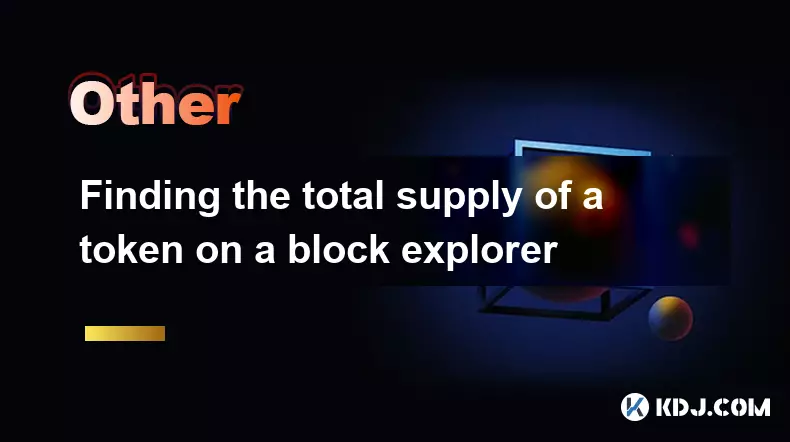
Finding the total supply of a token on a block explorer
Sep 04,2025 at 07:00pm
Finding Token Supply Information on Block Explorers1. Navigate to a blockchain explorer such as Etherscan, BscScan, or Solscan depending on the networ...
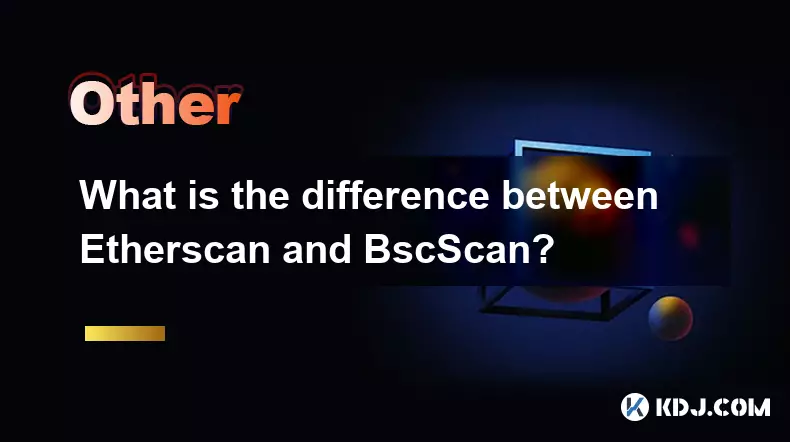
What is the difference between Etherscan and BscScan?
Sep 04,2025 at 07:55pm
Differences in Blockchain Networks1. Etherscan operates exclusively on the Ethereum blockchain, providing transparency and data tracking for all trans...
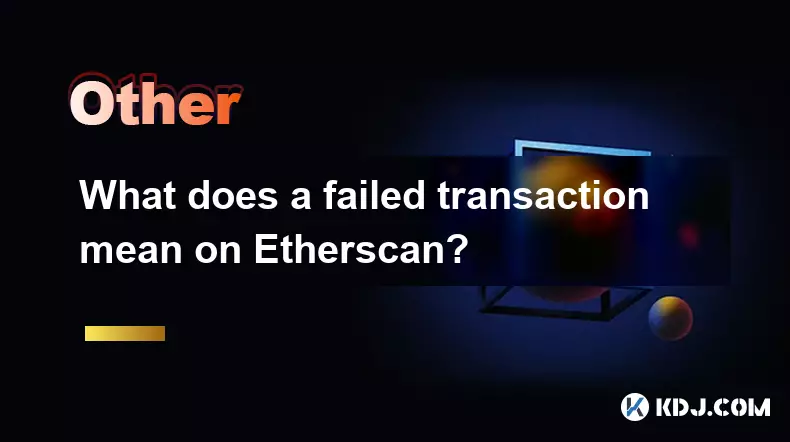
What does a failed transaction mean on Etherscan?
Sep 04,2025 at 05:55pm
Understanding Failed Transactions on EtherscanWhen users interact with the Ethereum blockchain, they often rely on Etherscan to monitor the status of ...
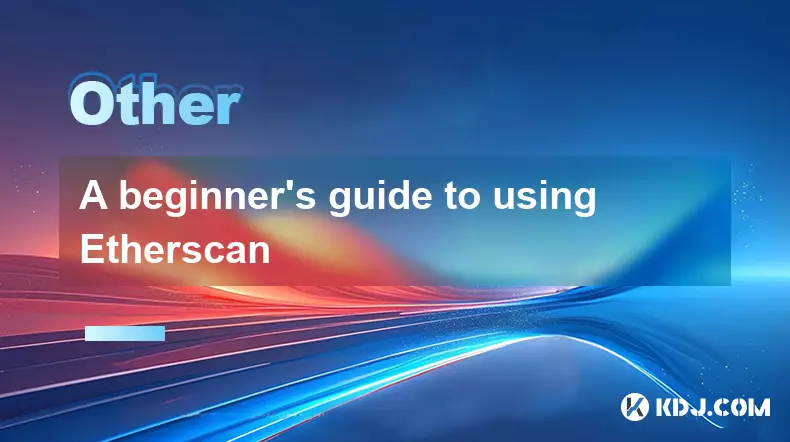
A beginner's guide to using Etherscan
Sep 04,2025 at 07:19pm
What Is Etherscan and Why It Matters1. Etherscan is a blockchain explorer specifically designed for the Ethereum network. It allows users to view real...
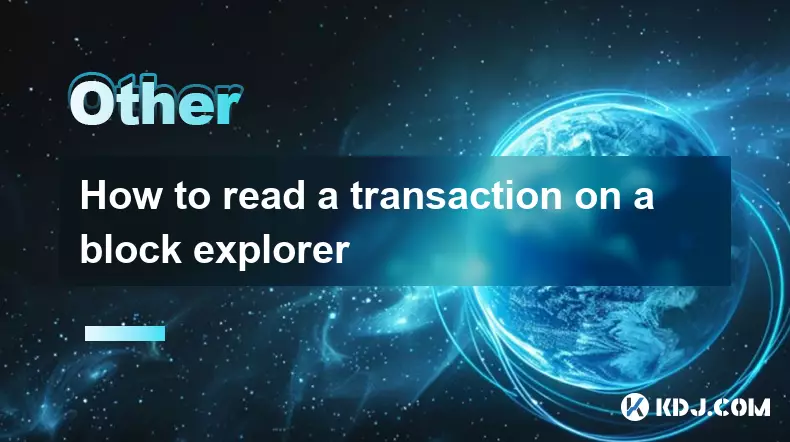
How to read a transaction on a block explorer
Sep 04,2025 at 10:01pm
Understanding the Basics of a Blockchain Transaction1. Every transaction recorded on a blockchain is publicly accessible through a block explorer, a t...

How to find the block height of a transaction
Sep 04,2025 at 08:37pm
Understanding Block Height in Blockchain Transactions1. Block height refers to the number of blocks that have been confirmed on the blockchain since i...

Finding the total supply of a token on a block explorer
Sep 04,2025 at 07:00pm
Finding Token Supply Information on Block Explorers1. Navigate to a blockchain explorer such as Etherscan, BscScan, or Solscan depending on the networ...

What is the difference between Etherscan and BscScan?
Sep 04,2025 at 07:55pm
Differences in Blockchain Networks1. Etherscan operates exclusively on the Ethereum blockchain, providing transparency and data tracking for all trans...

What does a failed transaction mean on Etherscan?
Sep 04,2025 at 05:55pm
Understanding Failed Transactions on EtherscanWhen users interact with the Ethereum blockchain, they often rely on Etherscan to monitor the status of ...

A beginner's guide to using Etherscan
Sep 04,2025 at 07:19pm
What Is Etherscan and Why It Matters1. Etherscan is a blockchain explorer specifically designed for the Ethereum network. It allows users to view real...

How to read a transaction on a block explorer
Sep 04,2025 at 10:01pm
Understanding the Basics of a Blockchain Transaction1. Every transaction recorded on a blockchain is publicly accessible through a block explorer, a t...
See all articles

























































































